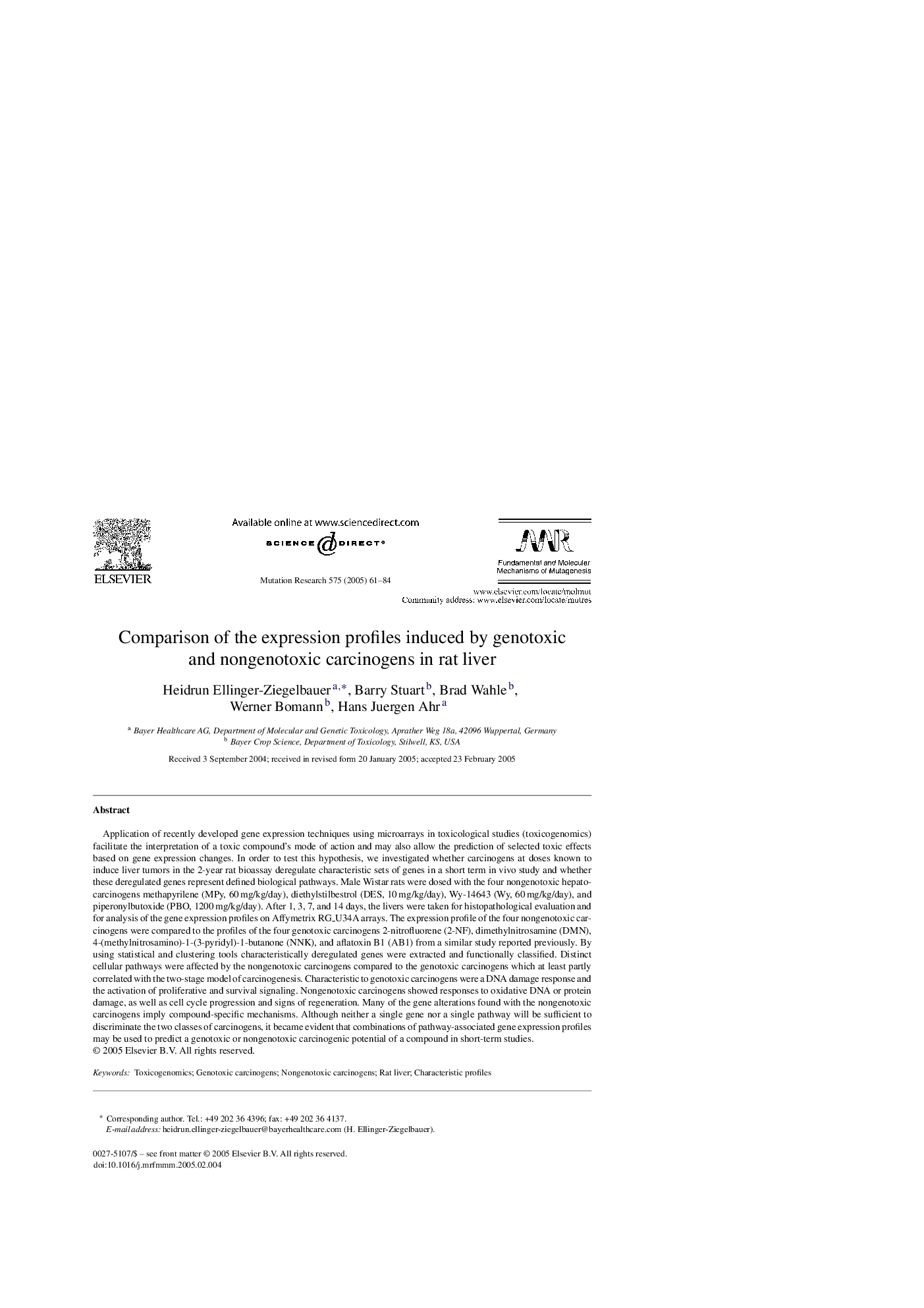| کد مقاله | کد نشریه | سال انتشار | مقاله انگلیسی | نسخه تمام متن |
|---|---|---|---|---|
| 9909091 | 1548433 | 2005 | 24 صفحه PDF | دانلود رایگان |
عنوان انگلیسی مقاله ISI
Comparison of the expression profiles induced by genotoxic and nongenotoxic carcinogens in rat liver
دانلود مقاله + سفارش ترجمه
دانلود مقاله ISI انگلیسی
رایگان برای ایرانیان
کلمات کلیدی
موضوعات مرتبط
علوم زیستی و بیوفناوری
بیوشیمی، ژنتیک و زیست شناسی مولکولی
تحقیقات سرطان
پیش نمایش صفحه اول مقاله

چکیده انگلیسی
Application of recently developed gene expression techniques using microarrays in toxicological studies (toxicogenomics) facilitate the interpretation of a toxic compound's mode of action and may also allow the prediction of selected toxic effects based on gene expression changes. In order to test this hypothesis, we investigated whether carcinogens at doses known to induce liver tumors in the 2-year rat bioassay deregulate characteristic sets of genes in a short term in vivo study and whether these deregulated genes represent defined biological pathways. Male Wistar rats were dosed with the four nongenotoxic hepatocarcinogens methapyrilene (MPy, 60Â mg/kg/day), diethylstilbestrol (DES, 10Â mg/kg/day), Wy-14643 (Wy, 60Â mg/kg/day), and piperonylbutoxide (PBO, 1200Â mg/kg/day). After 1, 3, 7, and 14 days, the livers were taken for histopathological evaluation and for analysis of the gene expression profiles on Affymetrix RG_U34A arrays. The expression profile of the four nongenotoxic carcinogens were compared to the profiles of the four genotoxic carcinogens 2-nitrofluorene (2-NF), dimethylnitrosamine (DMN), 4-(methylnitrosamino)-1-(3-pyridyl)-1-butanone (NNK), and aflatoxin B1 (AB1) from a similar study reported previously. By using statistical and clustering tools characteristically deregulated genes were extracted and functionally classified. Distinct cellular pathways were affected by the nongenotoxic carcinogens compared to the genotoxic carcinogens which at least partly correlated with the two-stage model of carcinogenesis. Characteristic to genotoxic carcinogens were a DNA damage response and the activation of proliferative and survival signaling. Nongenotoxic carcinogens showed responses to oxidative DNA or protein damage, as well as cell cycle progression and signs of regeneration. Many of the gene alterations found with the nongenotoxic carcinogens imply compound-specific mechanisms. Although neither a single gene nor a single pathway will be sufficient to discriminate the two classes of carcinogens, it became evident that combinations of pathway-associated gene expression profiles may be used to predict a genotoxic or nongenotoxic carcinogenic potential of a compound in short-term studies.
ناشر
Database: Elsevier - ScienceDirect (ساینس دایرکت)
Journal: Mutation Research/Fundamental and Molecular Mechanisms of Mutagenesis - Volume 575, Issues 1â2, 4 August 2005, Pages 61-84
Journal: Mutation Research/Fundamental and Molecular Mechanisms of Mutagenesis - Volume 575, Issues 1â2, 4 August 2005, Pages 61-84
نویسندگان
Heidrun Ellinger-Ziegelbauer, Barry Stuart, Brad Wahle, Werner Bomann, Hans Juergen Ahr,